
Voice Assistant Market by Offering (Hardware, Software, and Service), by Technology (Speech Processing, Understanding, and Security), by Application (Consumer, and Enterprise), by End-User (Consumer, and Enterprise Verticals)– Global Opportunity Analysis and Industry Forecast, 2025–2030.
Industry: ICT & Media | Publish Date: 11-Sep-2025 | No of Pages: 299 | No. of Tables: 218 | No. of Figures: 179 | Format: PDF | Report Code : IC582
Voice Assistant Market Overview
The global Voice Assistant Market size was valued at USD 7.35 billion in 2024 and is predicted to reach USD 33.74 billion by 2030, with a CAGR of 26.5% from 2025 to 2030.
Drivers of the market growth are the increasing adoption of smart devices and the expansion of smart home systems as well as continued innovation by market leaders. Regulation and compliance factors relating to voice assistors devices are a hindrance to market growth.
Hyper-personalization integration is a major growth opportunity with potential for enhanced user experience through personal interactions and services. Market leaders such as Alphabet Inc., Amazon Inc., and others are actively tracking product releases and artificial intelligence developments as tactics to solidify their market shares and expand product offerings. These efforts are likely to drive innovation, improve user engagement, and accelerate voice assistors device adoption.
Expansion of the Telecom Sector Propels Global Voice Assistant Market Trends
The global telecommunications industry is a major driver of growth in the voice assistant market, thanks to increasing integration of voice-based interfaces into customer service across mobile, broadband, and network platforms. These voice-enabled systems offer 24/7 support, enabling users to manage accounts, resolve issues, and access services via natural language, making customer experience more seamless at scale.
Simultaneously, massive growth in global data traffic—especially video content—is increasing demand for smarter, more responsive voice interfaces. The rise in internet-based services and the continued expansion of telecom infrastructure are enabling voice assistants to be deployed widely and effectively, reinforcing their role in both business operations and consumer engagement.
Rising Demand for Smart Home Devices Fuels Voice Assistant Adoption
Surging popularity of smart home devices is significantly boosting global demand for voice assistants. Users now rely on voice commands to control lighting, climate, security, and entertainment setups, driving demand for flexible and accurate voice interfaces that integrate smoothly with home ecosystems.
As smart home ecosystems mature, voice assistants have become central to convenience and automation. From managing daily routines to facilitating energy efficiency, these hands-free systems are increasingly regarded as essential components in households worldwide.
Regulatory and Compliance Issues Restrain Market Expansion
Privacy, data protection, and regional regulation now pose significant challenges for voice assistant developers. Compliance with global standards—such as EU data privacy regulations, consumer protection laws, and localization requirements—adds complexity, increasing development timelines and costs.
Smaller players and startups are particularly affected, as regulatory compliance can strain limited resources and hinder their ability to bring innovative products to market. This dynamic creates barriers to entry and slows sector-wide expansion, particularly in highly regulated markets.
Integration Of Hyper-personalized Experiences Presents Future Opportunities
Hyper-personalization is emerging as a compelling frontier for voice assistant technologies. By analyzing individual preferences, behavioral patterns, and context, these systems are delivering proactive recommendations, relevant reminders, and more natural conversational experiences—driving stronger user engagement.
This ability to anticipate and adapt to personal needs paves the way for voice assistants to become indispensable across smart homes, connected vehicles, healthcare platforms, and enterprise environments. The trend offers a vision of future market growth rooted in more intuitive, user-centric voice interactions.
By Component, Hardware Holds the Dominant Share in the Voice Assistant Market
In the market, the hardware sector holds a substantial market share. This is because hardware forms an important part of voice assistor devices' performance, reliability, and longevity in every application. Voice assistors need high-quality microphones, advanced processors, and low power chips for successful speech recognition, real time processing, and seamless integration with smart home systems, automotive infotainment systems, and business applications. The growing demand for voice devices, combined with advancements in artificial intelligence-based edge computing, also helps to justify hardware as a fundamental element of innovation and technology development within the sector.
By Device, Smart Speaker, Holds the Highest CAGR of 28.7%
In the voice assistant industry, smart speakers are the most rapidly growing sector, expected to grow at a great CAGR of 28.7%. It is driven by the rapid adoption of smart home technology, consumer demand for voice-free digital assistance, and ongoing natural language processing and artificial intelligence development. Smart speakers provide seamless connectivity with IoT products to empower voice-controlled automation of lighting, security, entertainment and other home functions. Their growing role in tailored user experiences, language capabilities and other added privacy features continues to accelerate adoption even further. With ongoing advancements in smart speaker technology, it continues to be an innovation driver as well as a market expansion.
North America Region Dominates the Voice Assistant Market
North America dominates the voice assistant market share due to the rise in use of smart devices in the region that fuels the market growth by development of robust ecosystem where voice technology is the master control device. Smart devices rely on voice assistants to function smoothly, enhancing user experience and interconnectivity.
The International Journal of Communication's latest report reveals that smart TV adoption by the U.S. households reached 77% in 2023. Growing adoption of smart devices boosts the demand for voice assistant as it offers hands-free interaction, tailored experience and efficient control of connected devices, thereby driving the market growth.
In addition, government spending on artificial intelligence in the region fuels the demand for voice assistants, as artificially intelligent voice assistors are being integrated into numerous various public services and applications, such as citizen engagement portals, education systems, and healthcare services.
The Government of Canada report states that Canadian government used about USD 1.39 billion to advocate for artificial intelligence adoption in 2024. Through the use of artificial intelligence, government increase the effectiveness and efficiency of public services, reduce the complexity of public services, and enhance experiences of citizens, thus encouraging voice assistant adoption across various industries in the region.
Asia-Pacific is Expected to Show a Steady Growth in the Voice Assistant Market
Asia-Pacific region is expected to witness a steady rise in the market during the forecast period. This is due to rapid technology advancements in voice assistant by industry giants revolutionized the way people communicate with machines and devices that indirectly drives market expansion. Building voice assistors enables users to perform multiple activities, from reminders and alarms setting to controlling home appliances, accessing information, and making hands free calls.
For instance, in November 2024, Samsung launched a new-generation Bixby voice assistant in China to offer efficient speech recognition, natural language processing, and learning user habits to offer predictive suggestions. Such an advancement in voice assistors technology drives the market growth by offering more accurate and personalized services, enabling users to voice-control devices, eventually driving market growth in the region.
Furthermore, the rise in smartphone penetration in the region is growing the need for hands-free and voice-controlled interfaces that in turn boosts the market growth. Voice assistors such as Siri, Google Assistant and Alexa on cell phones offer the users the convenience of hands-free usage of the phone.
The most recent Ministry of Commerce and Industry report states that India smartphone market size is USD 44.15 billion in 2023 and is anticipated to reach USD 88.99 billion by 2032. As users of smartphones are becoming more interested in more convenient and easier ways of communication with their smartphones, voice assistants are now a vital feature of universal inclusion, driving its demand within the region.
Competitive Landscape
Several key players operating in the voice assistant industry includes Amazon.com, Inc., Apple Inc., Google LLC, Microsoft Corporation, Samsung Electronics Co., Ltd., Baidu, Inc., Alibaba Group Holding Limited, Sony Corporation, Xiaomi Corporation, Huawei Technologies Co., Ltd., iFLYTEK Co., Ltd., OpenAI, Cerence Inc., SoundHound AI, Inc., IBM Corporation and others.
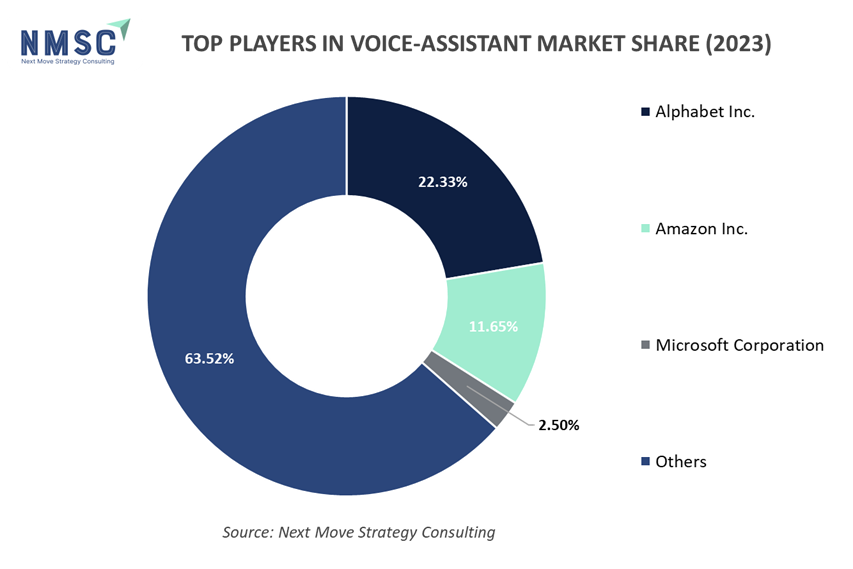
Note: For the latest market share analysis and in-depth voice-assistant industry insights, you can reach out to us.
These market players are adopting various strategies, including product launches across various regions to maintain their dominance in the market.
|
DATE |
COMPANY |
RECENT DEVELOPMENTS |
|
February, 2025 |
Xiaomi Corporation |
Xiaomi is preparing to launch a new smart speaker, the Xiaomi Smart Speaker Pro, initially in China. The speaker features a fabric-wrapped construction, a top light bar for effects and status LEDs, as well as tactile controls for playback and volume adjustments. |
|
February, 2025 |
Amazon |
Amazon launched a new artificial intelligence powered Alexa voice assistant that enhances its conversational abilities to make interactions more natural and informative. With the enhancement, Alexa can answer questions such as the kickoff time for football games and provide recipe suggestions. Alexa can now also write and read poetry, showcasing its new capability. |
|
October, 2024 |
Swann Security |
Swann launched SwannShield, a home security voice assistant powered by AI and created in collaboration with Thoughtworks. The system is integrated with existing devices such as video doorbells and cameras, allowing real-time user interaction for different security situations. |
Voice Assistant Market Key Segments
By Offering
-
Hardware
-
Smart Speakers
-
Smartphones & Wearables
-
In‑Vehicle Systems
-
Smart TVs & Appliances
-
-
Software
-
Device-Embedded (OEM)
-
Cloud Platforms & APIs
-
Installable SDKs/Frameworks
-
-
Service
-
Professional Services
-
Managed/Hosted Services
-
Custom Integration
-
By Technology
-
Speech Processing
-
ASR (Speech-to-Text)
-
TTS (Text-to-Speech)
-
-
Understanding
-
NLU (Intent Recognition)
-
Dialogue Management
-
-
Security
By Application
-
Consumer
-
Personal Assistance
-
Smart Home & IoT Control
-
In‑Car Infotainment & Navigation
-
-
Enterprise
-
Customer Service (incl. Payments)
-
Productivity Tools
-
Operational Automation
-
By End-User
-
Consumer
-
Enterprise Verticals
-
BFSI
-
Retail & E‑commerce
-
Healthcare & Pharma
-
Automotive
-
Telecommunications
-
Travel & Hospitality
-
Public Sector/Education
-
By Region
-
North America
-
The U.S.
-
Canada
-
Mexico
-
-
Europe
-
The UK
-
Germany
-
France
-
Italy
-
Spain
-
Denmark
-
Netherlands
-
Finland
-
Sweden
-
Norway
-
Russia
-
Rest of Europe
-
-
Asia-Pacific
-
China
-
Japan
-
India
-
South Korea
-
Australia
-
Indonesia
-
Singapore
-
Taiwan
-
Thailand
-
Rest of Asia-Pacific
-
-
RoW
-
Latin America
-
Middle East
-
Africa
-
Key Players
-
Amazon.com, Inc.
-
Apple Inc.
-
Google LLC
-
Microsoft Corporation
-
Samsung Electronics Co., Ltd.
-
Baidu, Inc.
-
Alibaba Group Holding Limited
-
Sony Corporation
-
Xiaomi Corporation
-
Huawei Technologies Co., Ltd.
-
iFLYTEK Co., Ltd.
-
OpenAI
-
Cerence Inc.
-
SoundHound AI, Inc.
-
IBM Corporation
Other Notable Players
-
Open AI
-
Swann Security
-
Xiaomi Corporation
-
Zirtual
-
Nokia Corporations
REPORT SCOPE AND SEGMENTATION:
|
Parameters |
Details |
|
Market Size in 2024 |
USD 7.35 Billion |
|
Revenue Forecast in 2030 |
USD 33.74 Billion |
|
Growth Rate |
CAGR of 26.5% from 2025 to 2030 |
|
Analysis Period |
2024–2030 |
|
Base Year Considered |
2024 |
|
Forecast Period |
2025–2030 |
|
Market Size Estimation |
Billion (USD) |
|
Growth Factors |
|
|
Countries Covered |
28 |
|
Companies Profiled |
15 |
|
Market Share |
Available for 10 companies |
|
Customization Scope |
Free customization (equivalent up to 80 working hours of analysts) after purchase. Addition or alteration to country, regional, and segment scope. |
|
Pricing and Purchase Options |
Avail customized purchase options to meet your exact research needs. |





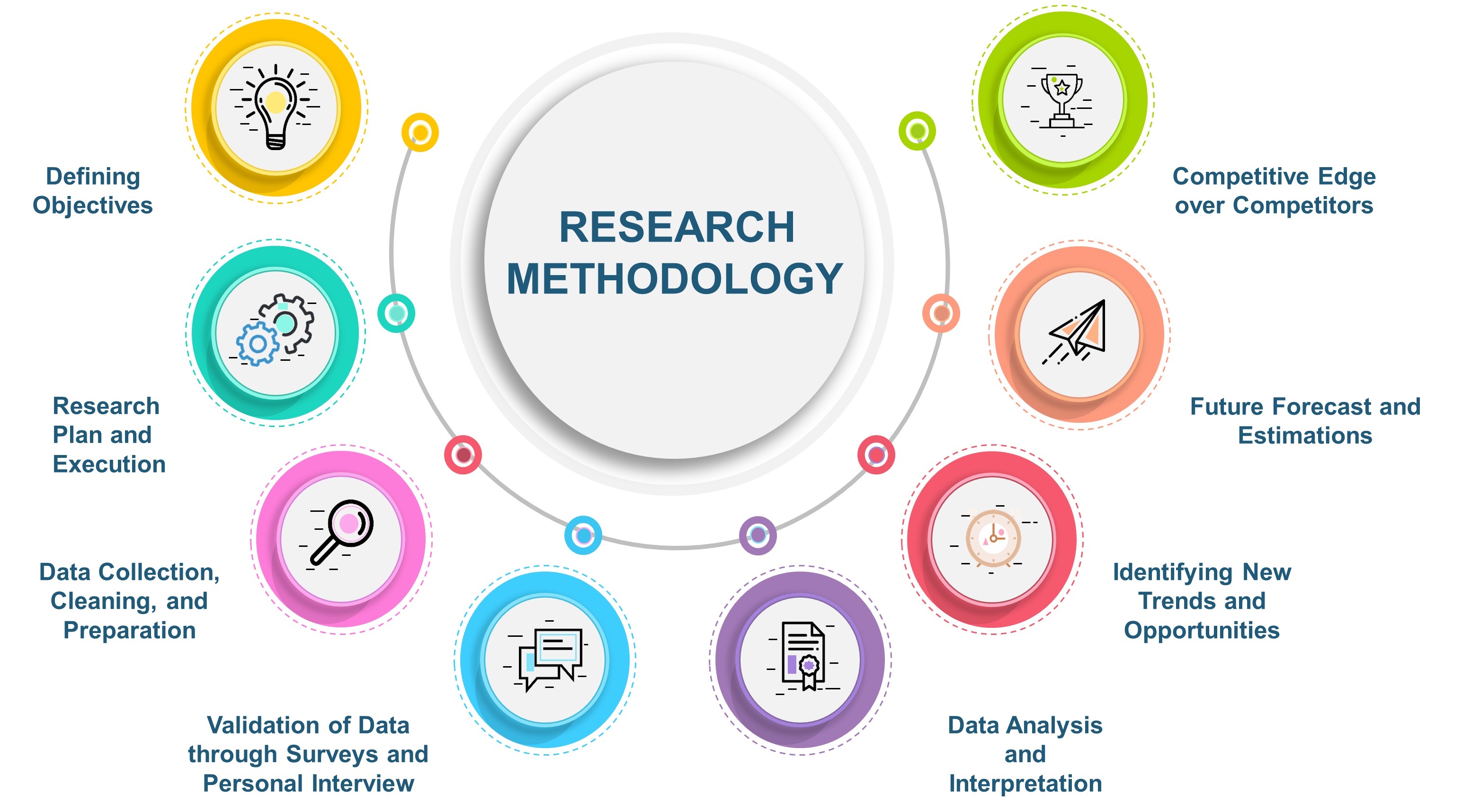
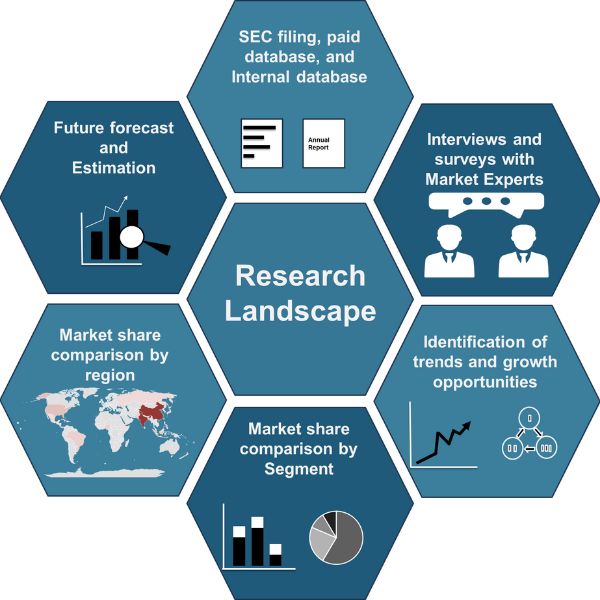

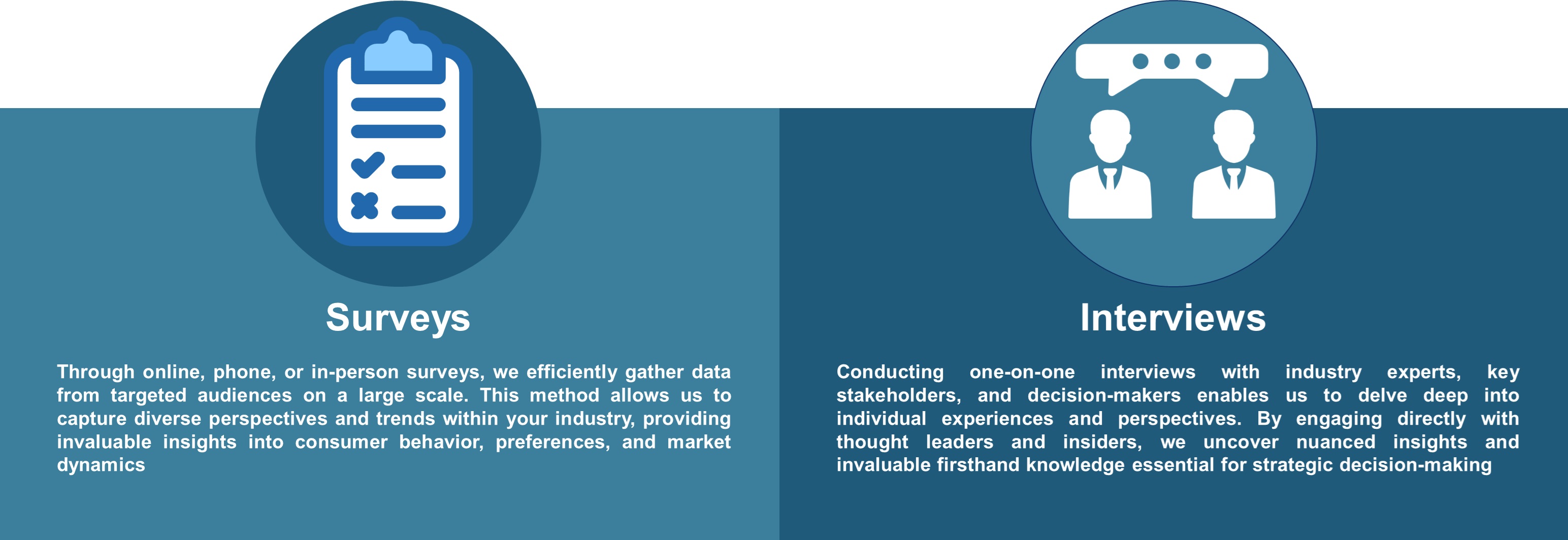



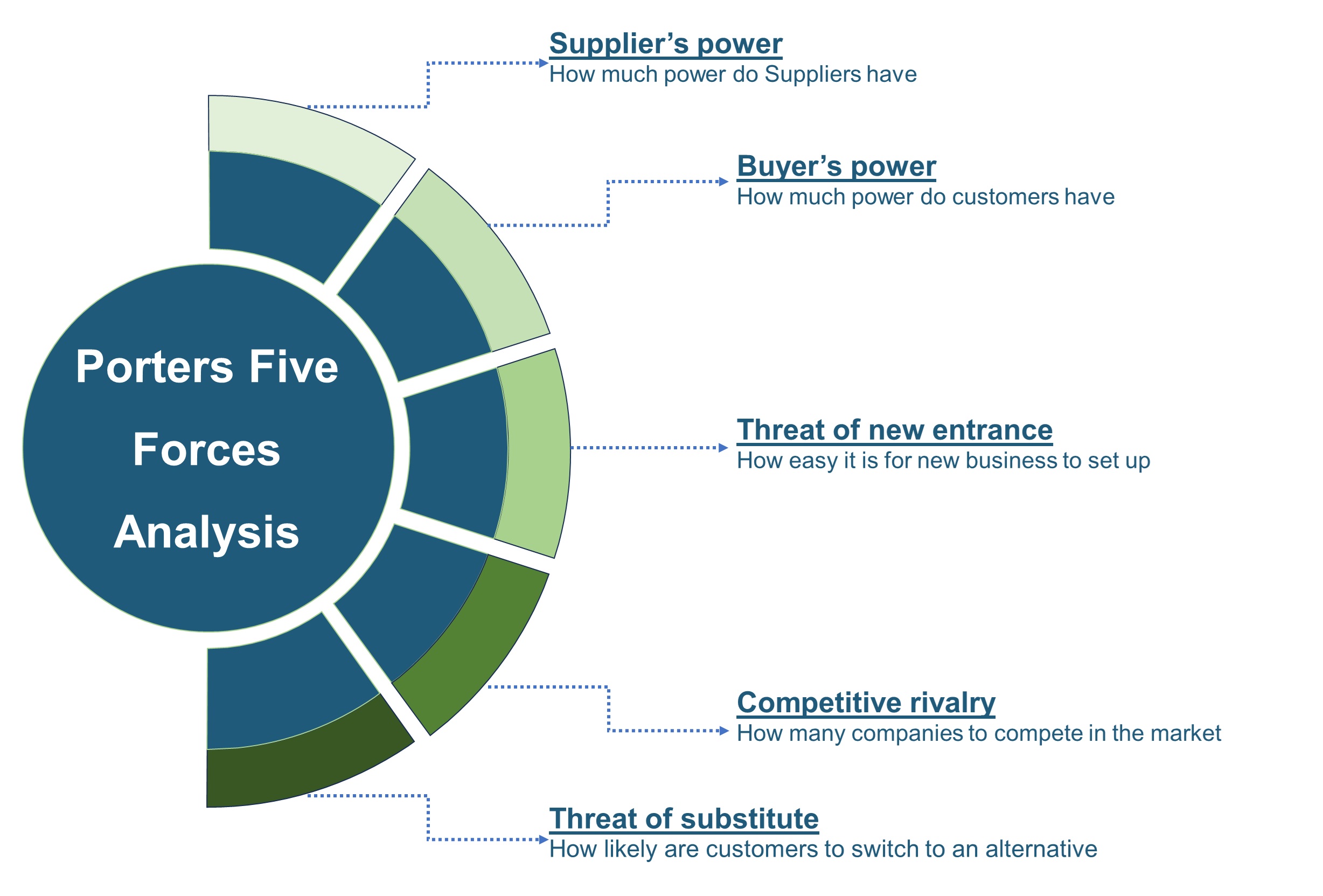

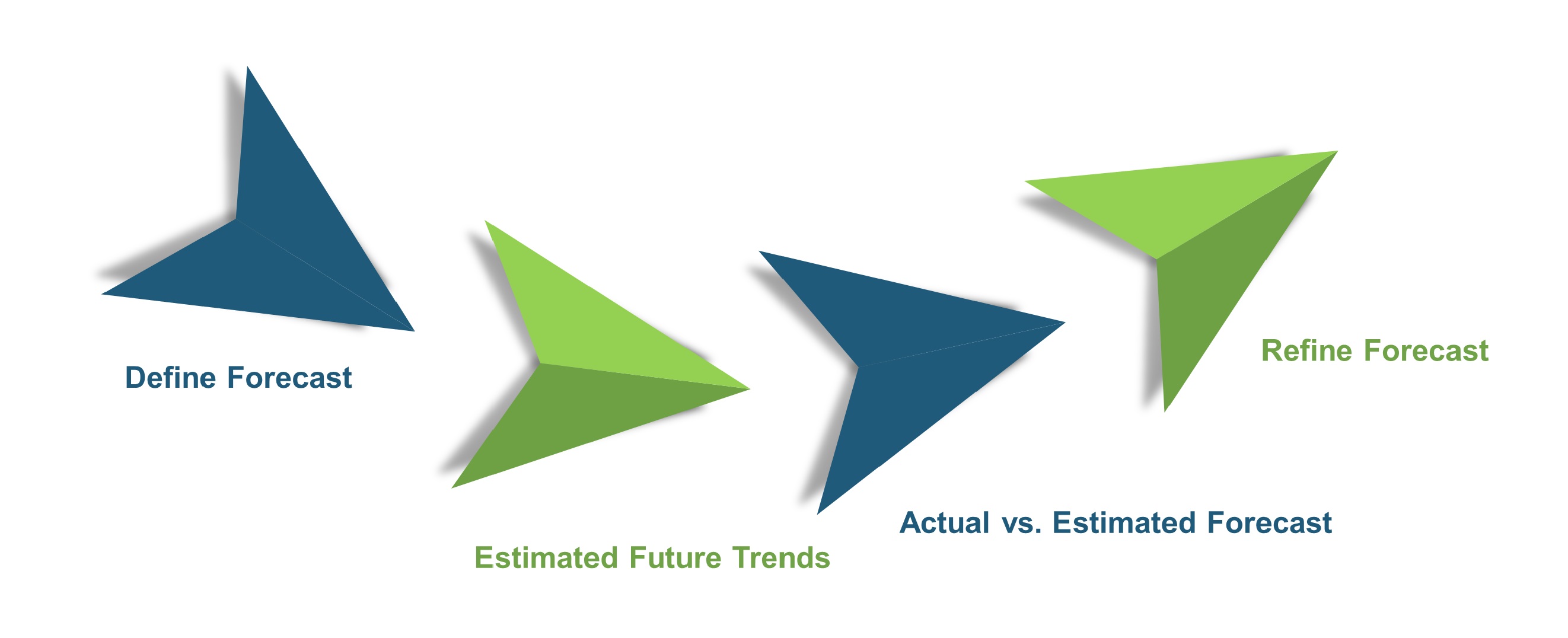





 Speak to Our Analyst
Speak to Our Analyst

























